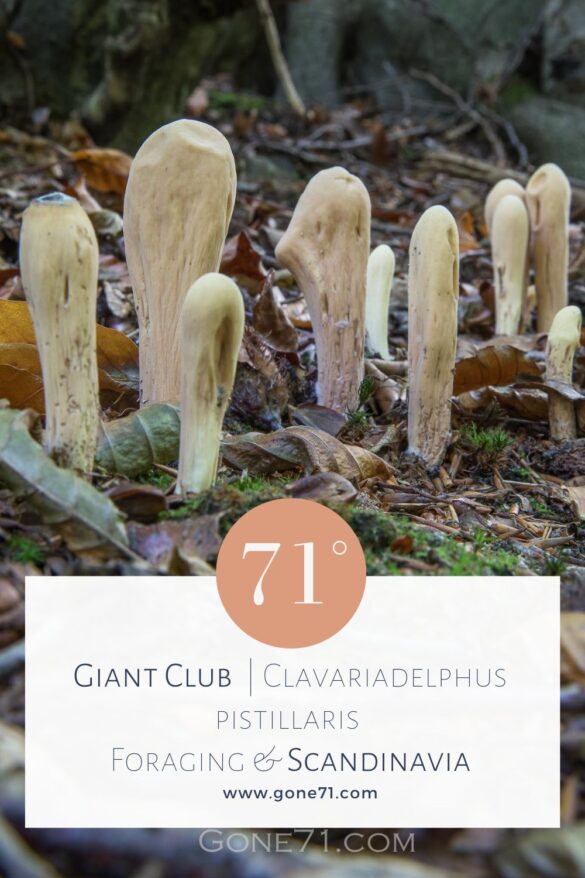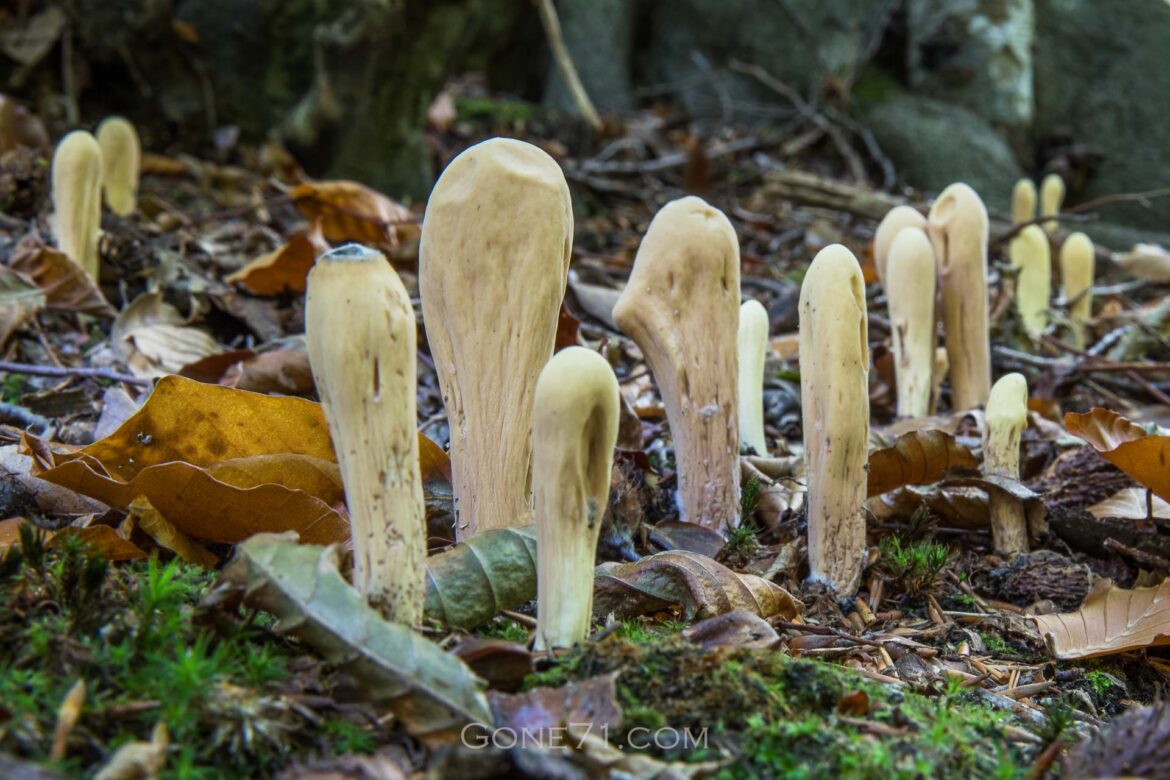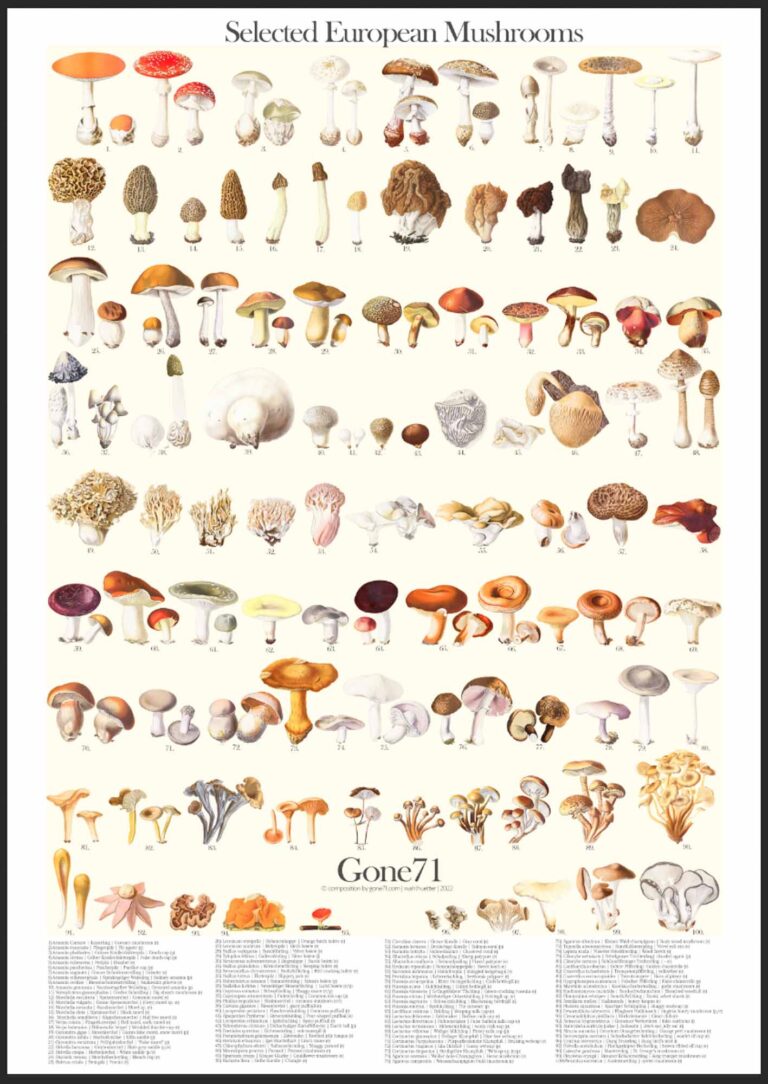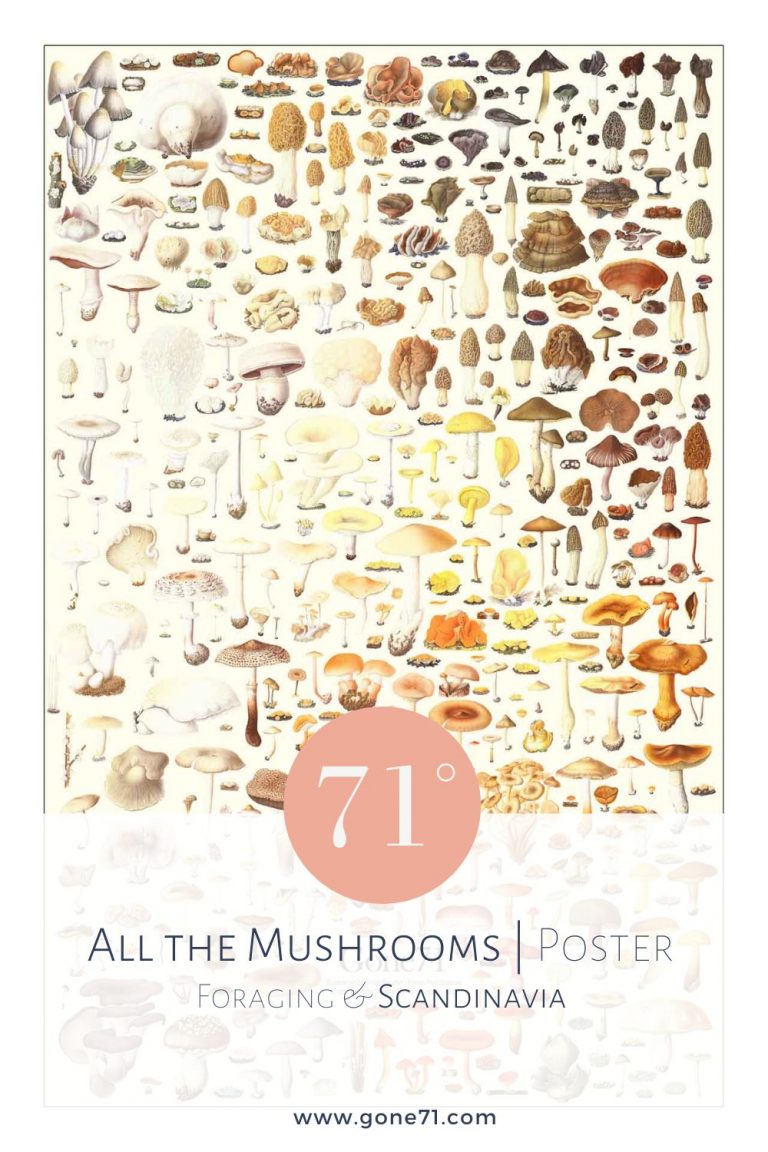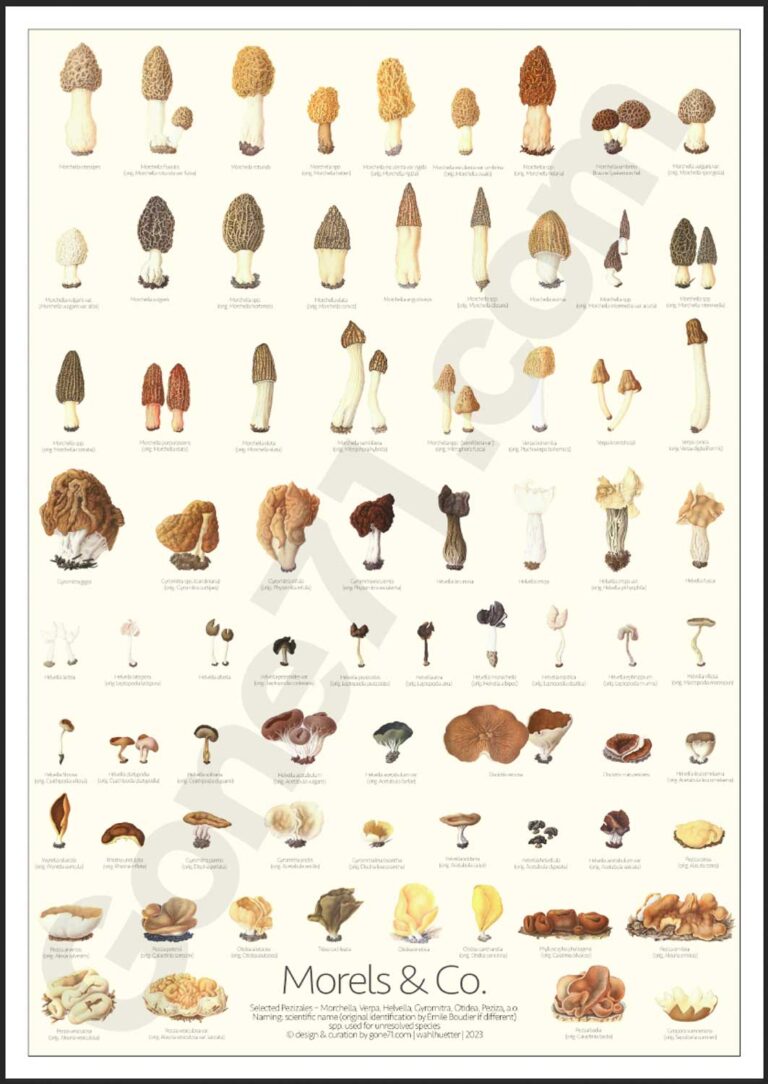nor.: Stor klubbesopp | swe.: Stor klubbsvamp | fin.: Isonuijakas | dt.: Herkules Riesenkeule, Herkuleskeule
Clavariadelphus pistillaris commonly known as the giant club is one of those mushrooms where you have to look twice to understand what is going on. The impressive fruiting bodies often grow up to 15cm high and broaden towards the top. Hence the eponymous name “club”. Young specimens are even considered edible if they are not too bitter. However, the general culinary qualities are rather modest.
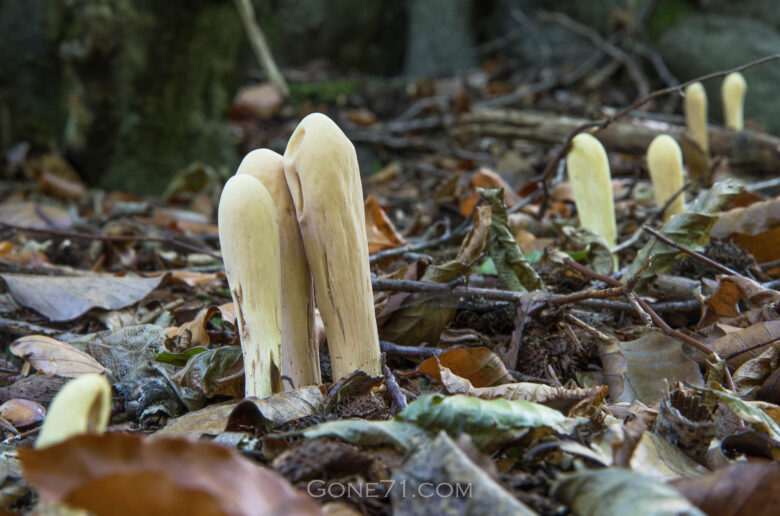
Appearance & habitat of Clavariadelphus pistillaris – the giant club
diameter: up to 4cm
height: up to 30cm
months: June – November (Central Europe)
colours: brownish, beige, red-beige to yellowish
habitat: Deciduous forest (beech), likes calcareous soil
odour: neutral, slightly mushroomy
consumption: cooke
With its distinct club-like shape, the giant club is easily recognizable and is usually found in beech forests with calcareous soils throughout the northern hemisphere from summer to late autumn (Europe).
The odor is mostly neutral. This species of mushroom typically grows to a height of 15cm but can get even bigger. The fruiting body is smooth, firm and often has a beige coloration. The cylindrical and cream-colored appearance in combination with the size sets it apart from most other mushroom species.
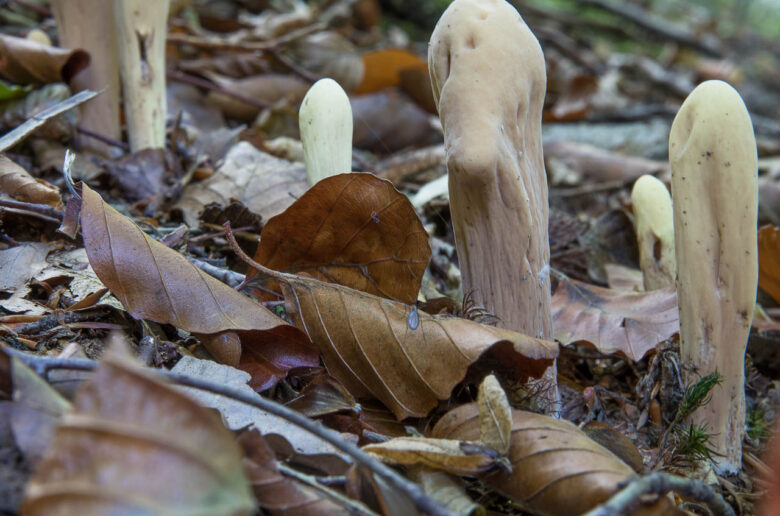
The flesh is white and firm, but also elastic and tough. It fills the entire fruiting body. Its smell is described as pleasant but also insignificant. The taste is usually bitter even in young specimens.
Giant club mushrooms are saprobic, meaning they obtain their nutrients from decomposing organic matter such as dead leaves and wood. They are typically found growing on the forest floor, in areas with a high level of moisture and moderate temperatures.
One of the key features of this mushroom is its lack of gills or pores on the underside of the cap. Instead, it has a smooth, even surface that is dotted with tiny bumps known as “sterigmata.” These bumps are where the spores of the mushroom are produced.
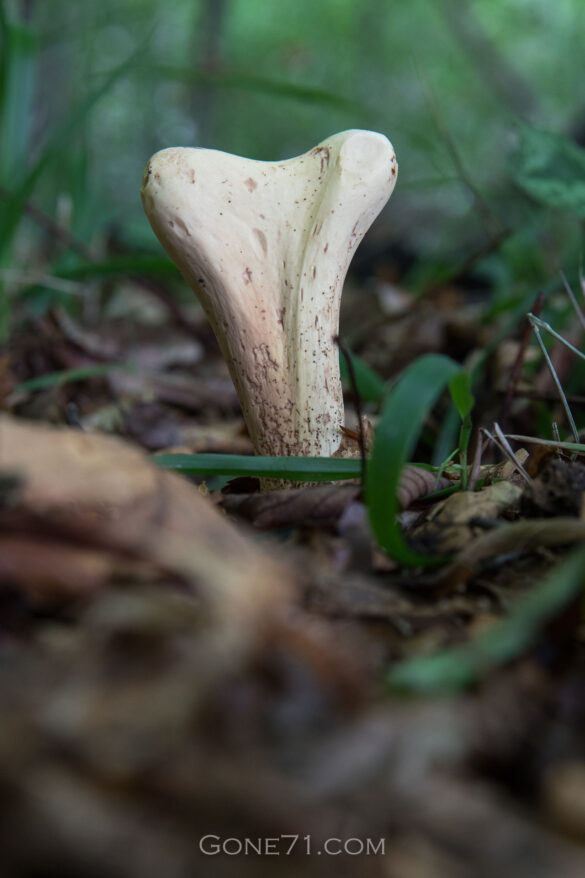
Look-Alikes of Clavariadelphus pistillaris – the giant club
Apart from their monotonous appearance, giant clubs can be confused with other types of club mushrooms, such as the also edible club coral or truncated coral (Clavariadelphus truncatus). These mushrooms are all in the same family as the pig’s ears aka violet chanterelles (Gomphus clavatus) by the way.
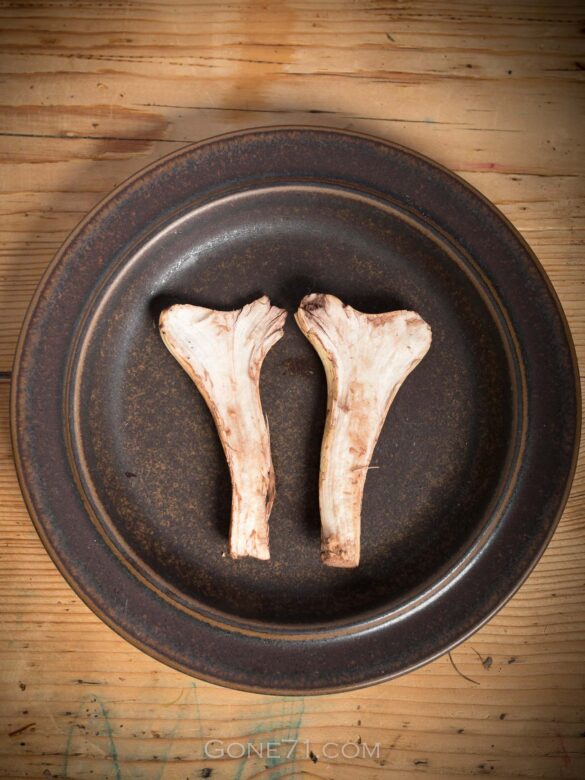
Caution: Mushrooms Are Not Guesswork!
Only harvest mushrooms that you can identify with 100% certainty! The consequences can be life threatening if you are wrong. If you have the slightest doubt: do not eat the mushroom! This is not a mushroom guide! For correct identification consult a mushroom expert.
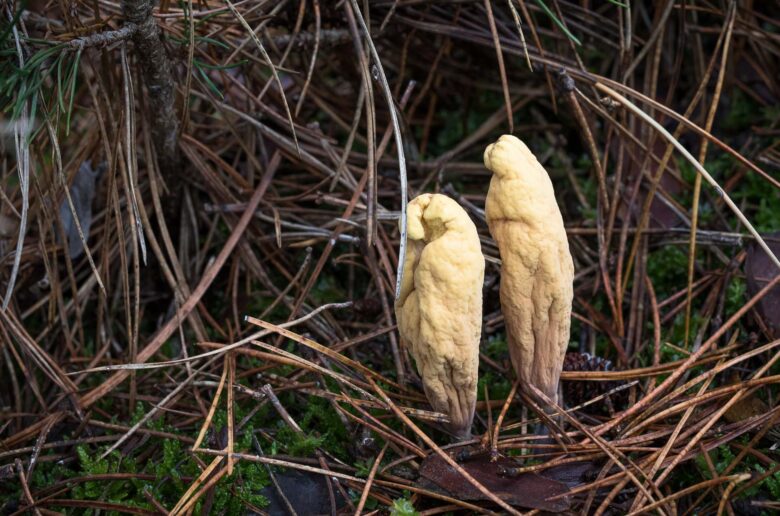
Clavariadelphus pistillaris (giant club) – in the kitchen
Despite their unique appearance, giant club mushrooms are not widely used in cooking due to their often bitter flavour. However, they are often sought after by foragers and mushroom enthusiasts due to their unusual appearance and the challenge of finding them in the wild.
If you want to eat these mushrooms, make sure they are not too bitter. Otherwise, the mushrooms are actually good edible mushrooms and are suitable as a varied addition to mixed mushroom dishes, for example.
Some foragers use it as a meat substitute in vegetarian dishes due to its texture, particularly in stir-fries or curries.
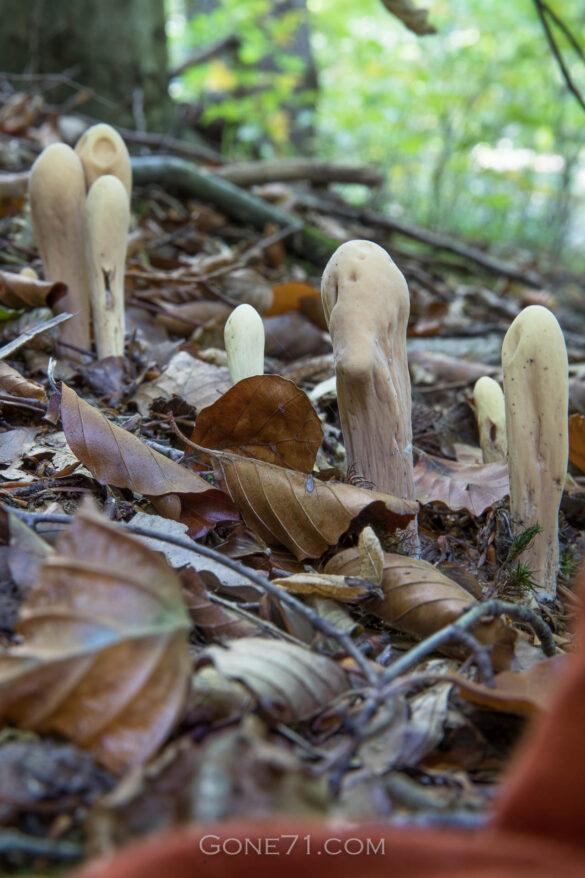
Medicinal properties of Clavariadelphus pistillaris (giant club)
Recent studies have shown that Clavariadelphus pistillaris contains several bioactive compounds that have potential therapeutic applications. Especially the anti-inflammatory properties and immunomodulatory and anticancer effects are being researched for different species of Clavariadelphus (e.g. here and here)
Especially C. pistillaris seems to contain a very high content of pistillarin, an antioxidant compound. Studies for other Clavariadelphus species show that the presence of clavaric acid in these mushrooms decrease the incidence of tumor growth in mice. This acid hinders the action of farnesyltransferase, an enzyme involved in the development of tumors, which implies that it may have potential as a treatment for certain types of cancer.
Recipe idea for Clavariadelphus pistillaris (giant club) mushroom curry
If you come across a batch of giant club fungi that are not too bitter for your taste you could try following curry recipe.
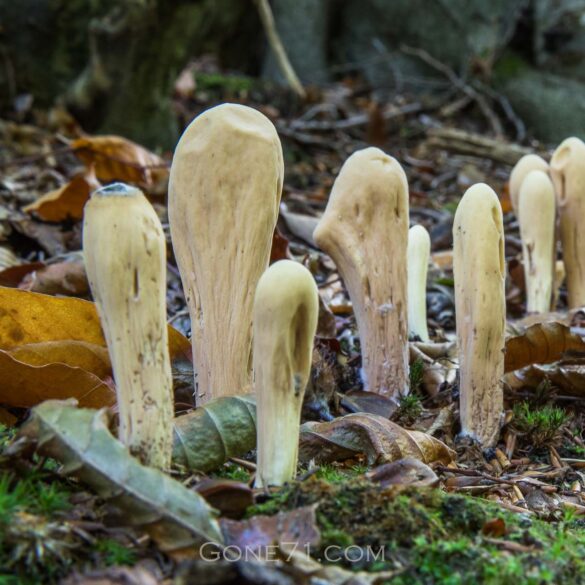
Giant club (Clavariadelphus pistillaris) curry
Ingredients
- 1 pound Clavariadelphus pistillaris mushrooms, cleaned and sliced
- 1 large onion, diced
- 3 cloves garlic, minced
- 1 tablespoon fresh ginger, minced
- 1 tablespoon curry powder
- 1 teaspoon ground cumin
- 1/2 teaspoon ground coriander
- 1/2 teaspoon turmeric
- 1/2 teaspoon paprika
- 1/4 teaspoon cayenne pepper (optional)
- 1 can (14 oz) diced tomatoes
- 1 can (14 oz) coconut milk
- 2 tablespoons vegetable oil
- Salt and pepper to taste
- Fresh cilantro, chopped (for garnish)
Instructions
- In a large pot or Dutch oven, heat the vegetable oil over medium heat. Add the onion, garlic, and ginger and cook until softened, about 5 minutes.
- Add the sliced Clavariadelphus pistillaris mushrooms to the pot and cook until tender, about 10 minutes. Season with salt and pepper to taste.
- Add the curry powder, cumin, coriander, turmeric, paprika, and cayenne pepper (if using) to the pot and stir to coat the mushroom mixture.
- Pour in the diced tomatoes and coconut milk and stir to combine. Bring the mixture to a simmer and let it cook for 10-15 minutes until the sauce has thickened and the flavors have melded together.
- Season with additional salt and pepper to taste, if needed.
- Serve hot over rice or with naan bread. Garnish with fresh cilantro, if desired.
Notes
You can adjust the spice level of the curry by adding more or less cayenne pepper, or by using a mild or spicy curry powder. Just make sure that the giant clubs are not too bitter.
We have compiled this overview with the best of knowledge and belief, but do not claim to be complete and reserve the right to make errors.
Learn more about poisonous mushrooms and mushroom poisons here
↓↓↓
Find some inspiration in our illustrations
↓↓↓
Find some inspiration in other mushroom recipes
↓↓↓
